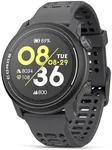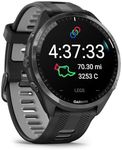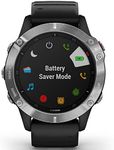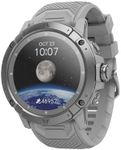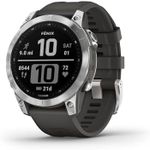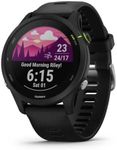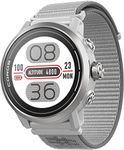Buying Guide for the Best Triathlon Watches
Choosing the right triathlon watch can significantly enhance your training and performance. A triathlon watch is designed to support you through swimming, cycling, and running, providing valuable data and insights to help you improve. When selecting a triathlon watch, consider the features that align with your training goals and the specific needs of each sport. It's important to find a balance between functionality, comfort, and durability to ensure the watch can withstand the rigors of triathlon training and competition.Water ResistanceWater resistance is crucial for a triathlon watch as it needs to withstand swimming sessions. This spec indicates how well the watch can handle exposure to water. Water resistance is usually measured in meters, such as 50m or 100m. For triathlons, a watch with at least 50m water resistance is recommended, as it can handle swimming and splashes. If you plan to swim in open water or dive, consider a watch with higher water resistance. Choose based on the type of swimming you do and the environments you train in.
GPS and NavigationGPS and navigation features are essential for tracking your routes and distances accurately during cycling and running. This spec helps you monitor your pace, distance, and location. GPS watches can vary in accuracy and battery life. Some offer basic tracking, while others provide advanced navigation features like route planning and back-to-start guidance. If you train in unfamiliar areas or participate in long-distance events, a watch with reliable GPS and navigation is beneficial. Consider your training environment and how much you rely on route data.
Heart Rate MonitoringHeart rate monitoring is important for understanding your exertion levels and optimizing your training. This feature can be built into the watch or require a separate chest strap. Optical heart rate sensors on the wrist are convenient but may be less accurate than chest straps, especially during intense activities. If precise heart rate data is crucial for your training, consider a watch that supports chest strap connectivity. Choose based on how you plan to use heart rate data to guide your workouts and recovery.
Battery LifeBattery life determines how long the watch can operate before needing a recharge, which is vital for long training sessions and races. Triathlon watches can have varying battery lives, especially when using GPS. Some watches offer extended battery modes to prolong usage. If you participate in long events or train for extended periods, a watch with a longer battery life is advantageous. Consider your typical training duration and how often you can recharge the watch.
Multisport ModeMultisport mode allows you to switch between different sports seamlessly, recording data for each segment of a triathlon. This feature is important for triathletes as it simplifies tracking transitions between swimming, cycling, and running. Some watches offer customizable multisport modes to suit various training routines. If you frequently participate in triathlons or train across multiple sports, a watch with an efficient multisport mode is essential. Consider how often you switch between sports and the importance of consolidated data.
Durability and Build QualityDurability and build quality ensure the watch can withstand the physical demands of triathlon training and competition. This spec includes the materials used for the watch case, strap, and screen. Watches made from robust materials like stainless steel or reinforced polymers are more durable. If you train in harsh conditions or are prone to accidents, a watch with high durability is important. Consider your training environment and how much wear and tear your watch might experience.
Connectivity and Smart FeaturesConnectivity and smart features enhance the functionality of a triathlon watch by allowing data syncing and notifications. This includes Bluetooth, Wi-Fi, and compatibility with fitness apps. Some watches offer smart notifications, music control, and contactless payments. If you value staying connected or using your watch for more than just training, these features can be beneficial. Consider how much you rely on smart features in your daily life and training routine.
